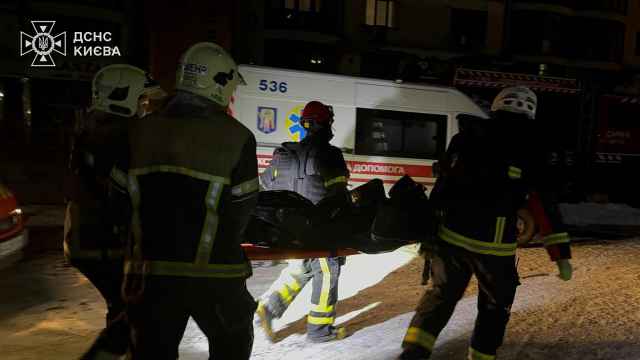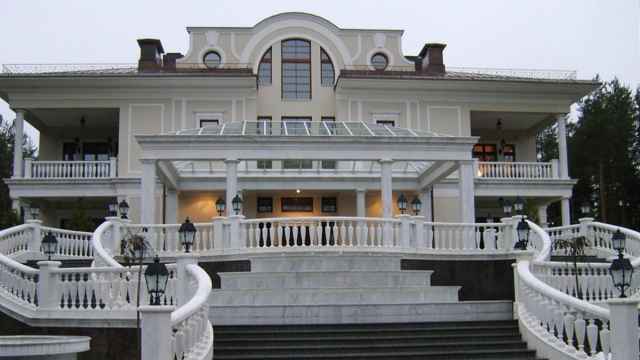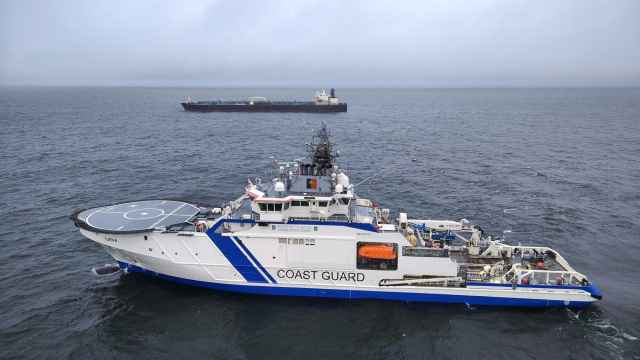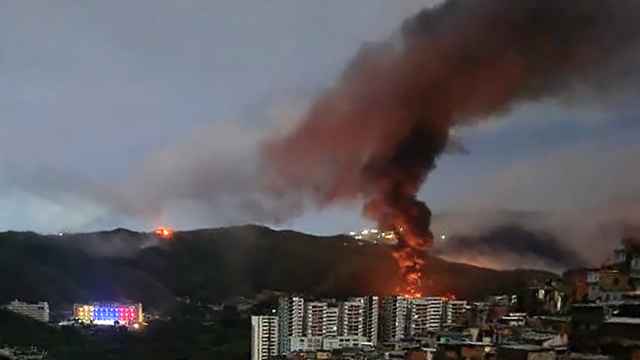French banks have about $50 billion of loans to Russia's public sector, companies and individuals, according to the Bank for International Settlements, or BIS, accounting for a fifth of foreign lending there and more than banks from any other country.
The European Union has imposed sanctions on some Russian officials and the EU and U.S. are expected to apply more economic penalties against Russia if a crisis over Crimea escalates.
Russia's banking system is dominated by hundreds of local banks and some big domestic firms, including Sberbank, VTB and Gazprombank. Foreign banks have a limited role — the biggest are France's Societe Generale, Italy's UniCredit and Austria's Raiffeisen.
A bigger issue for most foreign banks than retail banking exposure is likely to be any adverse effects on capital markets activity. Most of the world's big investment banks are involved in Russia and compete with domestic firms on trading, equity and bond issues and advisory work. Some big bond deals are under particular scrutiny at present, one banker said.
Overseas banks had $242 billion of loans to Russia at the end of September, according to the BIS data, which tracks cross-border lending from 24 of the world's major countries.
European banks accounted for $184 billion, or 76 percent, of the foreign lending to Russia. U.S. banks had $36.7 billion of exposure and Japanese banks had $16.3 billion.
In Europe, French banks had $50.9 billion of exposure to Russia. Italian banks had loans of $28.6 billion, German banks had exposure of $23.7 billion, British banks had $19.1 billion, Dutch banks had $17.6 billion, Swedish banks had $14 billion and Swiss banks had $6.8 billion, according to the BIS data.
Only SocGen, UniCredit and three other banks listed Russia as one of their top 10 country exposures under data released by the EU's bank regulator last year. Analysts said those banks could reduce their exposure if the Russian economy deteriorates, as lenders have done in Ukraine.
Here are details on selected bank exposures:
Societe Generale:
France's second-biggest bank had exposure of 22.4 billion euros ($30.9 billion) to Russia at the end of June, according to the European Banking Authority's, or EBA, data. That equated to 15.7 billion euros in risk-weighted assets.
SG Russia, which includes Rosbank and other insurance and financial operations, made operating income of 239 million euros last year, almost double 2012 despite a 41 percent jump in losses from bad debts. The bank said it had 13.5 billion euros of outstanding loans in Russia and deposits of 8.5 billion in the country at the end of 2013.
SocGen's equity in its Russian business accounted for 7.7 percent of its group total, Morgan Stanley analysts estimated.
Unicredit:
Italy's biggest bank by assets had exposure of 18.6 billion euros to Russia at the end of June, EBA data showed.
The bank said its revenues from Russia were 372 million euros in the fourth quarter, up 80 percent from a year earlier.
UniCredit's equity in its Russian business accounted for 2.7 percent of its group total, Morgan Stanley estimated.
Raiffeisen Bank International:
The Austrian lender said it is Russia's 10th-biggest bank, with a loan book of 10.2 billion euros, 2.5 million customers and 192 outlets. Its Russian assets represent 12 percent of the group total, and the Russian unit made 507 million euros in the first nine months of last year, most of the group's total.
EBA data showed Raiffeisen had a 13.2 billion euro exposure to Russia at the end of June.
Raiffeisen's equity in its Russian business accounted for 15.6 percent of its group total, Morgan Stanley estimated.
Otp Bank:
The Hungarian bank's exposure to Russia was 4.4 billion euros at the end of June, EBA data showed.
Bank of Cyprus:
Its exposure to Russia was 1.6 billion euros at the end of June, EBA data showed.
| European Companies' Exposure to Russia Varies | |||
| Finnish tire maker Nokian Renkaat, Austrian lender Raiffeisen Bank, Danish brewer Carlsberg and German retailer Metro feature among the European blue-chips with the biggest exposure to Russia, data from index provider MSCI shows.
Below is a table of the 100 European listed companies with the biggest exposure to Russia, in terms of percentage of overall revenues. — Reuters
| |||
| Company name (Country) | Exposure (%) | Company name (Country) | Exposure (%) |
| Coca-Cola HBC (Greece) | 32.34 | Umicore (Belgium) | 7.49 |
| Tele2 (Sweden) | 29.69 | Rexam (Britain) | 6.79 |
| Nokian Renkaat (Finland) | 26.41 | Adidas (Germany) | 6.75 |
| Immofinanz (Austria) | 22.49 | Coloplast (Denmark) | 6.57 |
| Raiffeisen Bank (Austria) | 21.52 | British American Tobacco
(Britain) | 6.24 |
| KBC Groupe (Belgium) | 19.11 | SAP (Germany) | 6.06 |
| Fortum Corp (Finland) | 16.71 |
| |
| Carlsberg (Denmark) | 16.63 | Heidelbergcement
(Germany) | 6.01 |
| Unicredit (Italy) | 14.30 | Total (France) | 6.00 |
| Metro (Germany) | 11.56 |
| |
| Henkel (Germany) | 10.21 | Scania (Sweden) | 5.91 |
| Neste Oil (Finland) | 8.03 | Lindt and Spruengli (Switzerland) | 5.76 |
| Saipem (Italy) | 7.68 |
|
|
| Ryanair (Ireland) | 7.56 | Source: MSI data | |
A Message from The Moscow Times:
Dear readers,
We are facing unprecedented challenges. Russia's Prosecutor General's Office has designated The Moscow Times as an "undesirable" organization, criminalizing our work and putting our staff at risk of prosecution. This follows our earlier unjust labeling as a "foreign agent."
These actions are direct attempts to silence independent journalism in Russia. The authorities claim our work "discredits the decisions of the Russian leadership." We see things differently: we strive to provide accurate, unbiased reporting on Russia.
We, the journalists of The Moscow Times, refuse to be silenced. But to continue our work, we need your help.
Your support, no matter how small, makes a world of difference. If you can, please support us monthly starting from just $2. It's quick to set up, and every contribution makes a significant impact.
By supporting The Moscow Times, you're defending open, independent journalism in the face of repression. Thank you for standing with us.
Remind me later.





